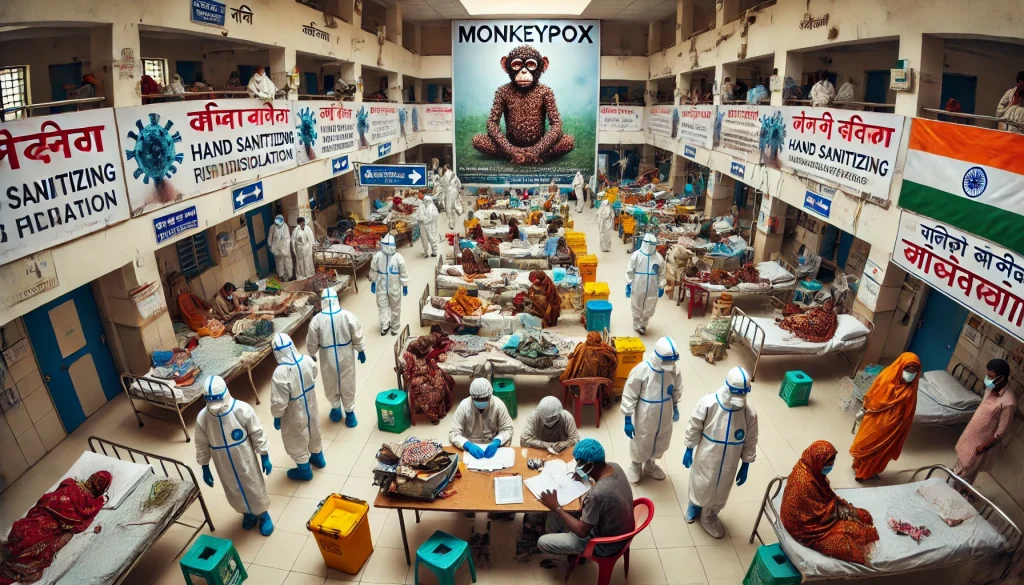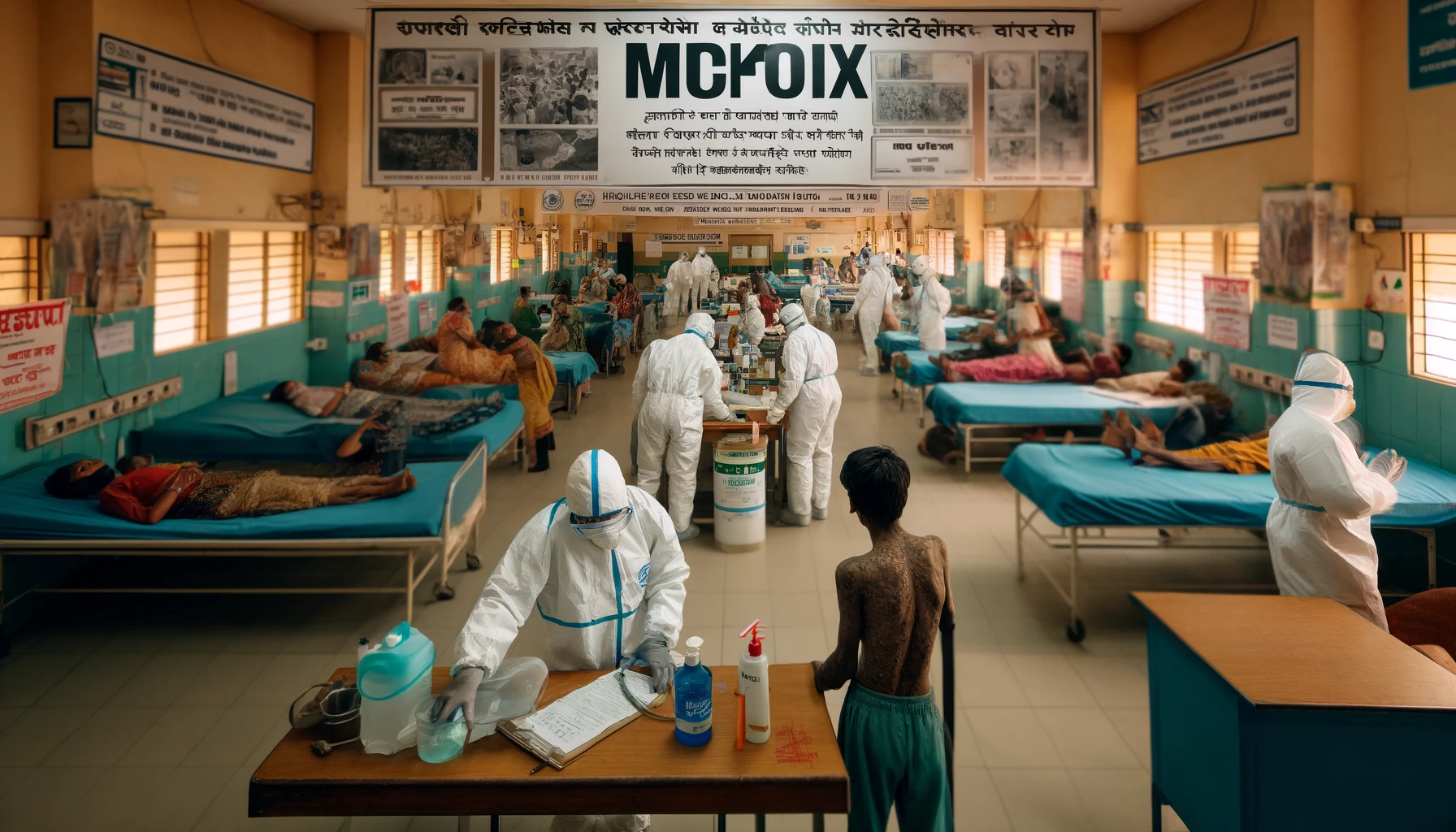
Mpox, formerly known as Monkeypox, is a viral infection caused by the Orthopoxvirus genus, which also includes the smallpox virus. Since its discovery, Mpox has been largely confined to Central and West Africa, but in recent years, it has emerged in various countries due to increased global travel and intercontinental outbreaks.
India reported its first case of Mpox in 2022, raising immediate concerns among public health officials. As of 2024, the nation has documented three cases, with the most recent ones surfacing in Kerala. Understanding the strain, symptoms, and containment strategies is crucial to controlling the spread of this disease in a densely populated country like India.
Mpox: What Is It and How Does It Spread?
Mpox is part of the Orthopoxvirus family, making it closely related to the smallpox virus, albeit less severe in most cases. However, the disease still presents significant risks, especially with the rise of more virulent strains.
The virus is transmitted through contact with infected animals or humans. It can spread via body fluids, skin lesions, respiratory droplets, and contaminated materials like bedding or clothing. With growing travel between Mpox-endemic regions and other parts of the world, outbreaks have become more common outside of Africa.
Mpox Strains: Clade 1 vs. Clade 2
Mpox has two main strains, or clades:
- Clade 1 (including subclades 1a and 1b): More severe, with a higher transmission rate and higher mortality risk.
- Clade 2 (subclades IIa and IIb): Less concerning but still capable of causing widespread illness.
India’s recent cases have shown the presence of both Clade IIb (earlier cases) and the more concerning Clade 1b strain (recently reported in Kerala), raising the urgency for containment and treatment strategies.
2024 Mpox Outbreak in India: Cases and Analysis
The Mpox outbreak in India has taken a new turn in 2024. Here’s a breakdown of the cases reported so far:
- First Case (Haryana, May 2024): A 26-year-old man from Hisar, Haryana, was the first Mpox case in India in 2024. This case involved the Clade IIb strain, which is less aggressive. The patient had recently returned from travel and was quickly isolated.
- Second Case (Kerala, September 2024): The second case, a 38-year-old man from Edavanna, Kerala, was more alarming. He tested positive for the Clade 1b strain, which has a higher transmission potential and severity.
- Third Case (Kerala, September 2024): The most recent case, involving a 26-year-old man who returned from the UAE, has also been flagged for potential Clade 1b infection. Authorities are still awaiting genomic sequencing results to confirm the strain.
Each case has been handled with strict isolation protocols, and the Kerala government has implemented widespread public health measures, including contact tracing and quarantine protocols for those at risk.
Symptoms and Diagnosis of Mpox

Mpox symptoms typically appear within 7-14 days of exposure and include:
- Fever
- Swollen lymph nodes
- Headaches and muscle aches
- Fatigue
- Rash that begins on the face and spreads to other parts of the body
In more severe cases, particularly with the Clade 1b strain, the disease can progress to serious complications, including pneumonia, sepsis, and encephalitis. The skin lesions can also lead to secondary bacterial infections, prolonging the illness.
Diagnosis of Mpox
Diagnosing Mpox requires laboratory tests, especially polymerase chain reaction (PCR) testing, which helps detect the virus’s DNA in skin lesion samples. In India, the National Institute of Virology in Pune plays a crucial role in processing these samples and conducting genomic sequencing to identify the specific strain involved.
Public Health Response in India
India has a robust public health infrastructure, but the challenge of containing new infectious diseases like Mpox remains daunting. The central government, along with state authorities, has been quick to mobilize resources and put preventive measures in place.
Isolation and Quarantine Protocols
State health departments, particularly in Kerala and Haryana, have activated isolation protocols for those infected with the virus. Hospitals are prepared with designated wards for Mpox patients, ensuring minimal exposure to other patients.
Contact Tracing and Genomic Sequencing
Authorities are tracing all contacts of confirmed Mpox patients to prevent further spread. Genomic sequencing, conducted at facilities like the National Institute of Virology, helps differentiate between the strains and allows health officials to predict the likely severity of future cases.
Vaccination and Treatment
While no specific antiviral treatment is available for Mpox, vaccination against smallpox has shown effectiveness in preventing the virus. The Indian government is considering the rollout of targeted vaccination drives in high-risk areas, especially among healthcare workers and those with direct exposure to confirmed cases.
How Kerala Is Leading India’s Fight Against Mpox
Kerala has been at the forefront of India’s fight against Mpox. After reporting two cases in a short span, the state’s health department launched widespread awareness campaigns, increased airport screening, and strengthened medical infrastructure to handle any potential surge in cases.
The Kerala model of proactive public health measures has been lauded internationally, with the state’s swift response to Mpox following similar efforts in the past for COVID-19 and Nipah virus outbreaks. Key components of Kerala’s Mpox strategy include:
- Immediate Isolation: Hospitals in Kerala are equipped with specialized wards for handling Mpox patients.
- Public Awareness: Informative campaigns across digital platforms, traditional media, and community health centers have been crucial in spreading awareness.
- Community Engagement: Kerala’s health workers are deeply embedded in local communities, aiding rapid contact tracing efforts and timely reporting of potential cases.
Preventive Measures and Global Lessons
Prevention remains the most effective tool in curbing the spread of Mpox. Some important preventive measures include:
- Personal Hygiene: Regular hand washing and the use of sanitizers, especially after contact with infected individuals or animals.
- Avoiding Close Contact: Avoid direct contact with skin lesions or body fluids of suspected Mpox patients.
- Public Health Campaigns: Increased public health outreach can help inform the public about risks and precautions. India’s efforts mirror similar successful containment strategies seen in nations like the United States and the UK, where early detection and rapid response have helped curb transmission rates.
Conclusion
Mpox presents a growing public health challenge in India, particularly with the emergence of the Clade 1b strain, which poses a greater threat due to its higher transmission and severity. As of 2024, the country’s health infrastructure is holding up under pressure, but continued vigilance is essential.
With Kerala at the helm, India’s public health response has been swift and effective, focusing on containment, awareness, and isolation of cases. Ongoing research into the virus, its transmission, and possible vaccines will help India and other nations tackle Mpox as a global concern.

